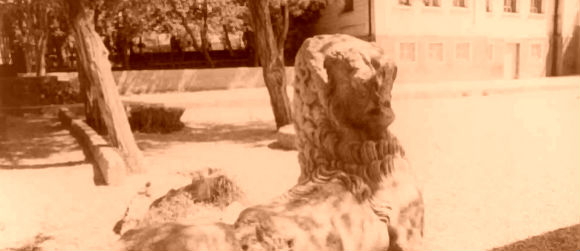The site of Tavium has yet to be excavated. It was probably not far from Boğazköy, the Hittite capital, or from Yozgat, and may have been one kilometer west of Büyük Nefes Köy, about 40 kilometers west of Yozgat. The whole area first came under the influence of the Roman Empire and then was Hellenized.
Tavium, was the chief city of the Galatian tribe of Trocmi, one of the three Celtic tribes which migrated from the Danube Valley to Galatia in present-day central Turkey in the 3rd century BCE. Owing to its position on the high roads of commerce was an important trading post. The site was successively occupied by Hittites, Cimmerians, Persians, Celts, Greeks, Romans, Seljuk Turks and Ottoman Turks. At the time of the Roman Empire, Tavium was an important crossroads and a stopping place on the caravan routes.
One of the few things we do know about Tavium was that there was metalworking, because coins have been found that were minted there in the early 1st century bearing the likenesses of Marcus Aurelius and Elagabalus. Copper, tin, iron and silver were mined in the nearby mountains. If we can draw parallels with other Celtic sites of the time, the smelting and stamping was done by a small group of artisans working in one or two stone huts.
In the temple at Tavium there was a colossal statue of Jupiter in bronze, greatly venerated by the Galatians. There was some doubt about the exact site of the city, but it is today generally believed to be the ruins situated close to the village of Nefezköy (today known as Büyüknefes), lying in a very fertile plain east of the Halys in the province of Yozgat.
These ruins were partly used in building the neighbouring town of Yozgat. We find there the remains of a theatre and possibly of a temple of Jupiter; these have a number of inscriptions, mostly Byzantine. In the Notitiæ Episcopatuum the bishopric of Tavium is mentioned up to the 13th century as the first suffragan of Ancyra.
The names of five bishops of the area are known: Dicasius, present at the Councils of Neocæsarea and Nice; Julian, at the second Council of Ephesus (449), and at the Council of Chalcedon (451), and a signer of the letter from the Galatian bishops to the Emperor Leo (458); Anastasius, present at the second Council of Constantinople (553); Gregory at the Council in Trullo (692); Philaretus at Constantinople (869).
As of the early 20th century, Büyüknefes was inhabited during the winter by nomadic Turkish tribes. It was then in the kaza (district) of Sungurlu and the vilayet of Ankara. Now it is a part of Yozgat Province.
Tavium,
